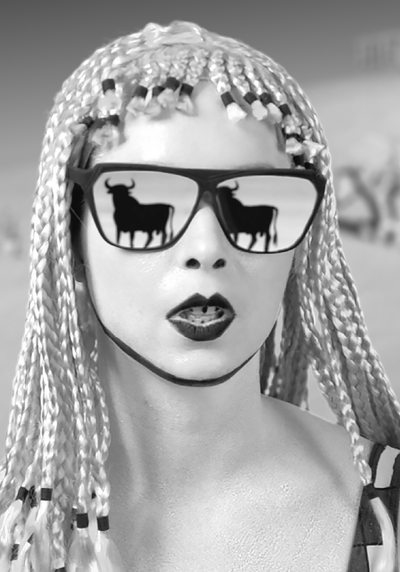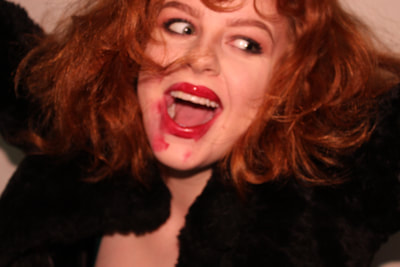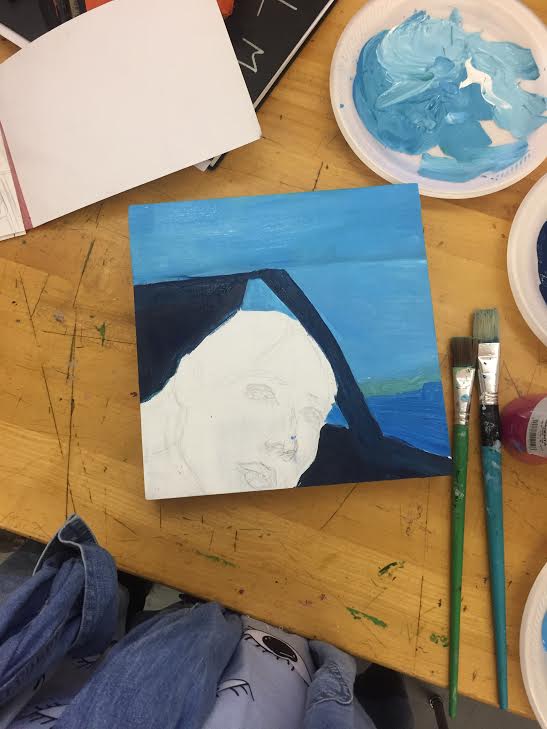|
Mary Reid Kelley was born in Greenville, South Carolina in 1979. She is a photographer and videographer whose work portrays female identity in a historical context through bold geometric shapes, black and white coloring and the symbolism behind those concepts. She aims to shine light on the struggles women throughout history have faced and their role in society at different points in time. I think her work can help inspire my own in that I think her style is extremely unique and it really interests me. I hope to draw inspiration from her content as well as her style because I've been really impressed with everything I've seen from her.
0 Comments
Parker Day is a California-based photographer who works with the themes of identity and connects, like I do, to the concept of an alternate identity. She uses exaggerated facial expressions and bold which is something I really like about her work and try to use in my own. I think it's funny because our work is so similar and our concepts are really on the same wavelength. I really really love her work, but I didn't draw inspiration from her in the beginning. I discovered Day after I started working with the themes that I do now, so I think it's really funny how similar two people can be without realizing it. Anyway, she's not a huge inspiration to me and I'm really excited to use what I've learned from her in my future projects.
Both the articles I read this quarter were designed to ask the question: What is propaganda art? However, the types of art discussed in each article fell on vastly different ends of the spectrum in regards to what art is. The first article discussed Socialist Realism; a movement that became prevalent during the Cold War, and ISIS propaganda, which is a more current topic. The question of "how do propaganda and art relate to one another?" was universal throughout both the articles, but the particular art movements are almost inverses of each other.
Socialist Realism is very clearly art, but is it propaganda? ISIS is an organization that makes very obvious propaganda, but can we consider this art? The two styles are such complete opposites that this question seems impossible to answer. Socialist Realism depicts what seem like ordinary and mundane scenes, but the background and the content of the work speaks to the political climate in which they were created and, in a way, influenced the way it's audience thought. ISIS makes propaganda that is based off of the work of other artists, but intentions are very clear and it's hard to tell if they care about it being "art." Judging by these characteristics, I am of the opinion that Socialist Realism is propaganda in a strange indirect sort of way, but ISIS propaganda is not art. I was searching for inspiring collage artists in my journey to compete this post and I stumbled across the work of Mimmo Rotella, an Italian artist who was active during the 60's. The two works I showed above called Cleopatra (left) and Marilyn (right) were bother created in 1962. I really like Rotella's work because while they are collage they still depict a singular subject and a coherent composition. It also really appeals to me that most of his work portrays these really famous movie stars from the time period and that content is just something I can really get behind on a personal level. I also like to work with content that portrays sort of a superficial depiction of glamour that hides a layer of power and self-ownership. I think his work is very similar to mine and I can draw a lot of inspiration from it so I'm really glad I found this guy.
So for my upcoming project I've gotten a significant amount of work done with my photography which I'm then going to turn into a collage. So basically this post is just to show some of the photos I took since I haven't physically "collaged" them yet.
So kinda what I want to do in this project is a development of my content (Identity and Alter Ego) as well as my craftsmanship and use of photography as a medium. So what I have planned out is sort of a collage of photos of me which I'm going to print out and sort of deface in some way or another. But more important than describing my process is talking about what this means. Basically, this is a depiction of Debbie, which is what I call my brain when it's acting up. I have ADHD as well as a whole other cocktail of mental things going on in my life which kind of cause me to feel a separation of my mind and body as well as a separation of my head and my heart, if you will. It's difficult to explain, but sometimes I start talking or doing something and I actively don't want to be doing it but I can't stop so it feels like someone else has taken over and my true consciousness is no longer in control. In addition to that though, sometimes I have thoughts that I don't agree with or feel things I don't want to be feeling, which seems weird because why am I not in control of these things? It's a completely internal situation, so I should be the only source of power. That's where Debbie comes in. I've sort of named the entity that lives in my head and causes my strange bouts of detachment and am now trying to display her visually. So that's what I'm up to this month.
The concept of art created as a reaction to war is very interesting to me because I am particularly compelled by art that induces emotion. I think depictions of pain and suffering are some of the most emotionally provocative pieces of art that can exist. The two readings I did relating to artists reaction to war and grief were really compelling to me because They focused on two very different wars and the art that was produced out of the metaphorical ruble of those two wars were also very different. Pieces from Spanish artist Francisco de Goya (which were done in response to the French and Spanish War) are very emotional and raw and reflect more of the internal feelings and the effects of war on the individual, as it were, whereas the work of Jacob Epstein (created in response to WWI) are more abstracted and provoke thoughts about the process and development of war itself.
I think the questions that both these articles raise in relation to one another have to do with context and how it affects what sort of art is created during these extremely harrowing moments in history. The issues of subject and medium can come into play because they play a huge role in the response the audience will have to the art. The feeling of the work can be completely changed by the type of medium the artist is working in and what type of specific marks are being made. In addition, the depiction of graphic violence is often extremely provocative and is a deliberate choice by the artist, as opposed to abstract or symbolic work. So clearly there are infinite ways that pain and suffering can be conveyed as we see in both the readings, which I find very interesting. Well, here she is. It's my photography series titled "Circadian Rhythm" that is designed to capture the feeling of my dreams through visual aesthetics and color. Enjoy. So, the content for this painting was based off of all the road trips I took as a child and capturing the feeling of driving at night through a painting. I used a photo from Petra Collins as a reference for anatomy and colors. It's going well. That's kind of it for right now.
So basically, I want this project to be a photography series about dreams and my attempts to capture they aesthetics as well as experimenting with makeup and photography. I plan on painting myself and my sister in such a way that implies the distortion you see when you're dreaming, but in a way that requires a bit of a double take to notice. I just really want to capture the feeling of a dream in real life because it's something I've always wanted to do and never been able to.
|
AuthorI make art about being sad |
















 RSS Feed
RSS Feed
